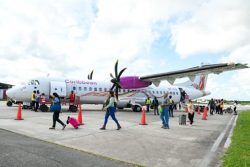LONDON, (Reuters) – The world’s first malaria vaccine got a green light yesterday from European drugs regulators who recommended it as safe and effective to use in babies in Africa at risk of the mosquito-borne disease.
The shot, called RTS,S or Mosquirix, and developed by British drugmaker GlaxoSmithKline in partnership with the PATH Malaria Vaccine Initiative, would be the first licensed human vaccine against a parasitic disease and could help prevent millions of cases of malaria in countries that use it.
It still faces hurdles before being rolled out in Africa, including winning agreement from governments and other funders that it is worth using, since it offers only partial protection.
Mosquirix, also part-funded by the Bill & Melinda Gates Foundation, will now be assessed by the World Health Organization, which has promised to give its guidance before the end of this year on when and where it could be used.
Malaria infects around 200 million people a year and killed an estimated 584,000 in 2013, the vast majority of them in sub-Saharan Africa. More than 80 percent of malaria deaths are in children under the age of five.
Andrew Witty, GSK’s chief executive, said the European Medicines Agency’s (EMA) positive recommendation was a further important step towards making the world’s first malaria vaccine available.
“While RTS,S on its own is not the complete answer to malaria, its use alongside those interventions … such as bed nets and insecticides would provide a very meaningful contribution to controlling the impact of malaria on children in those African communities that need it the most,” he said.
Mosquirix was assessed for quality, safety and efficacy under a special procedure that allows the EMA to evaluate a product even if it will not be marketed in the European Union.
Global health experts have long hoped scientists would be able to develop an effective malaria vaccine, and researchers at GSK have been working on RTS,S for 30 years. The shot also contains an adjuvant, or booster, made by U.S. biotech company Agenus.
Hopes that Mosquirix would be the final answer to wiping out malaria were dampened when trial data released in 2011 and 2012 showed it reduced episodes of malaria in babies aged 6-12 weeks by only 27 percent, and by around 46 percent in children aged 5-17 months.
The EMA recommendation is that the shot should nevertheless be used in babies in the full age range covered in the trials, from six weeks to 17 months.
Some malaria specialists have expressed concern that the complexities and potential costs of deploying this first vaccine when it provides only partial protection make it less attractive and more risky.
“The timing, duration, and outcomes of some of the critical steps to possible vaccine implementation in African countries are not yet known,” said David Kaslow, PATH’s vice president of product development.
However Joe Cohen, a GSK scientist who has led the development of Mosquirix since 1987, said on he had no doubt the vaccine could significantly reduce the toll of sickness and death caused by the malaria among African children.
“I have absolutely no reservations in terms of rolling this vaccine out,” he told Reuters. “Why? Because the efficacy, when translated into cases averted and deaths averted, is just tremendous. It will have an enormously significant public health impact.”
GSK has promised it will make no profit from Mosquirix, pricing it at the cost of manufacture plus a 5 percent margin, which it will reinvest in research on malaria and other neglected tropical diseases.
Sources involved in planning for Mosquirix’s potential future use have told Reuters they’ve been advised to work with a price tag of around $5 per dose, which would bring the cost of a recommended four-dose immunisation to $20.





